Home / Healthy Life / Window Box Salad
.png?width=346&height=346&name=Paediasure%20UK%20Mobile%20Images%20(11).png)
6 Easy Window Box Salads your Children Will Love
6 easy window box salads your fussy eater will love to grow
Struggling to get your fussy eater to eat their greens? Giving them the opportunity to grow and pick their own is definitely worth a go. The secret is to choose a variety of textures, colours and flavours. We show you how in our step-by-step guide. Make sure your little one is in charge of the whole process. Giving them a sense of ownership is the key to success. Why not show what you grow on our Facebook page?
What you will need:
Seeds
Suitable container/s
Multi-purpose compost
Step 1: What to grow and why
We’ve chosen 6 tasty and quick growing cut-and-come-again leaves packed with nutrients. You can pick them when they’re young and keep on picking for several weeks.
-
Lettuce: Salad Bowl is a lovely bright green cut-and-come-again lettuce leaf that’s very reliable. There is also an attractive red variety. Studies suggest that leafy greens are important for gut health1 as they may support the growth of ‘good’ bacteria.
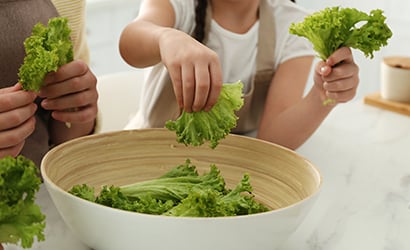
- Beetroot: More than just a root vegetable, beetroot has gorgeous red-veined leaves that are delicious picked young and look great too. Leafy greens are a good source of Vitamin C which is important for your child's general health and immune system and can also help their body absorb iron2.
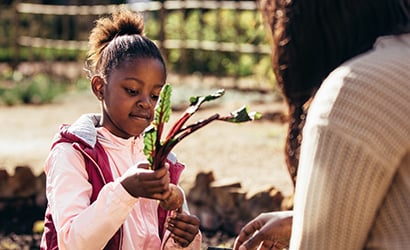
- Red kale: This healthy vegetable with its rich red colouring makes a lovely contrast to the other leaves. It’s a good source of plant-based calcium and contains vitamins C, E and K as well as minerals such as iron3. Iron is essential for your child’s mental and physical development4.
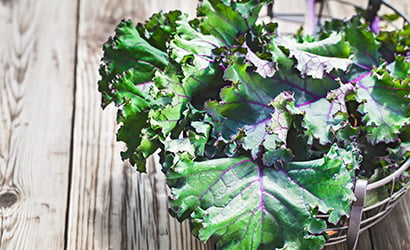
- Spinach: Picked young it’s great raw in salads and has a gentle flavour. Or you can add it to soups and pasta sauces. Spinach contains vitamin K which is important for helping wounds heal5. It also contains magnesium, calcium and phosphorus which are important for maintaining bone health6.
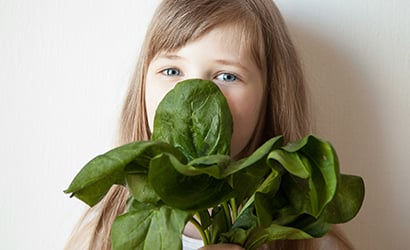
- Basil: This fragrant herb is a lovely soft leaf which is traditionally used in pesto. Keep picking to keep plants nice and bushy.
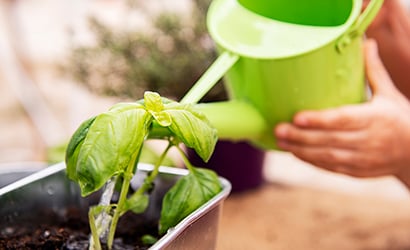
- Rainbow chard: The stems of rainbow chard range from pinks and reds to oranges and yellows. This makes them very appealing to children. They also contain vitamins A, C and K. They are slightly bitter when eaten raw so you might prefer to add these to stir fries and sauces. According to the NHS, Vitamin A is important for babies and young children, and some may not be getting enough2. It's needed for a healthy immune system, can help their vision in dim light, and keeps skin healthy.
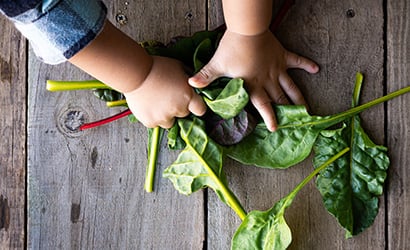
Step 2: Choose and prepare your container
Any container will do. You could even upcycle an empty PaediaSure Shake tin. Just remember to make some holes in the bottom for drainage.
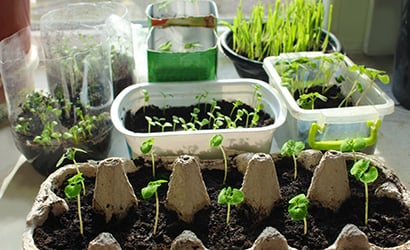
Now for the messy, fun bit – filling the container with compost. Encourage your little one to get stuck in. What does the compost feel like? What does it smell like? (Don’t fill right to the top or the compost will spill over when you water.) Smooth it over so it’s level, then gently sprinkle with water so the compost is damp but not soaking. Now it’s time to get sowing.
Step 3: Sow your seeds
Seed packets can be a bit fiddly to open. Depending on the age of your child you may need to help them with this bit. Or you could prepare the seeds ahead by pouring some of each variety into the compartments of an empty egg box.
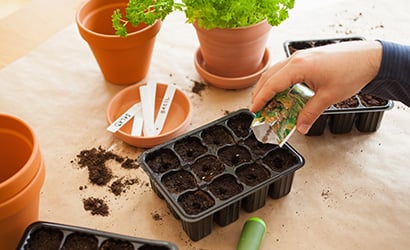
Now, your little head gardener simply needs to sprinkle the seeds onto the compost. It’s as easy as that. Sow a few of each variety either together or in separate containers depending on what you have. Then sprinkle lightly with compost. They can use the palms of their hands to tap the compost down gently. Don’t forget to label them so you can remember what you’ve sown.
Step 4: Care for your seedlings
Encourage your child to check the container/s regularly for signs of life. Germination normally takes a couple of weeks but in warm weather it can be quicker. Don’t be tempted to water too much. Keep the compost damp but not wet or seeds can rot. It’s so exciting when tiny leaves start to appear!
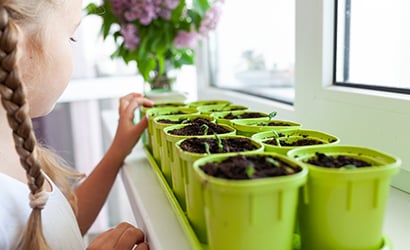
Step 5: Enjoy your salad leaves!
Your little one will love to harvest the leaves they have grown all by themselves. It’s definitely a moment to celebrate. Remember to show them how to wash the leaves before they eat them. If they don’t like all the flavours, it doesn’t matter. They might enjoy the feel of them or the colour. The point is they’re engaging with food in a new way.

Sowing a few more seeds every couple of weeks will keep the supply of healthy leaves going right through into autumn. Your little head gardener should be proud of themselves. They’ve taken another step forward on their journey to a balanced diet.
Need more ideas to tempt your fussy eater? Encourage them to try new flavours with these creative pancake toppings.
References:
1. Science Daily, 2016 https://www.sciencedaily.com/releases/2016/02/160215114005.htm Accessed March 2022
2. NHS, 2021 https://www.nhs.uk/conditions/baby/weaning-and-feeding/vitamins-for-children/ Accessed March 2022
3. BBC Good Food, 2021 https://www.bbcgoodfood.com/howto/guide/health-benefits-kale Accessed March 2022
4. NHS, 2019 https://www.nhs.uk/conditions/baby/weaning-and-feeding/what-to-feed-young-children/ Accessed March 2022
5. NHS, 2020 https://www.nhs.uk/conditions/vitamins-and-minerals/vitamin-k/ Accessed March 2022
6. BBC Good Food, 2021 https://www.bbcgoodfood.com/howto/guide/ingredient-focus-spinach Accessed March 2022
 Return to recipes
Return to recipes

